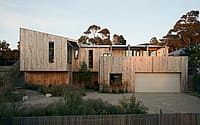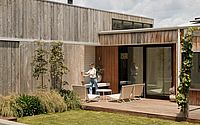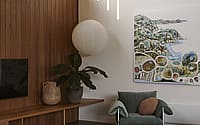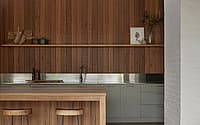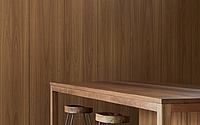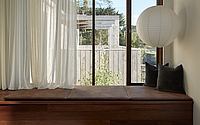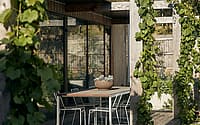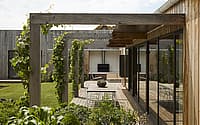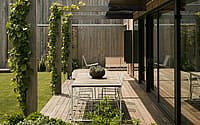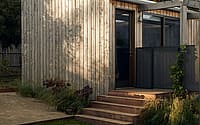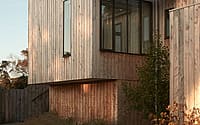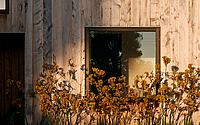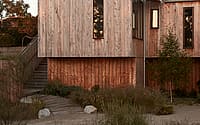Cypress House by Loreco Constructions
Cypress House sustainable coastal family home located in Flinders, Australia, designed in 2020 by Loreco Constructions.









Description
A tactile coastal family home, designed with sustainability and liveability as guiding principles.
The conceptual drive of the project was to explore the potential for an affordable, robust, and highly sustainable house that retained the ease of use and liveability of a coastal family home. The clients set high goals for the performance of the house, and for its efficiency both in day-to-day terms and with regards to resources. There is a singularity to the design-driven by a strong connection to natural materials, particularly through the use of timber in the project. The client engaged with this deeply, sourcing sustainably produced and reclaimed materials for use throughout the project. Formally, a courtyard strategy of enclosure and retreat was modified to meet site conditions and to maximize the efficiency of the plan. Relationships between zones of the site, both internal and external, were carefully curated to ensure that strong connections could be made visually, spatially, and through shared use.
The simplicity, practicality, and warmth of the design elevate the daily lives of the young family inhabitants, both in terms of its usability and aesthetic beauty. The constant presence of natural light, cross-ventilation, aspects of landscaping, and stable thermal performance enables a high-quality, engaging, and low-fi living experience. Neat planning and spatial connections allow day-to-day routines to be efficient and comfortable, while a layering of secondary living and functional areas allows the house to expand and contract to accommodate visitors who might stay for an afternoon, a weekend, or a week.
The design takes cues from a rich lineage of singular, honest, and robust timber coastal houses on the Mornington Peninsula while adapting its form and site strategy to the more layered needs of its prominent position on sloping land in an evolving town. Materiality is key to its integration into the environment and the landscape. The scale and volumetric language of the building are generous while being closely tied to an economy of space, material, and structure.
The clients were instrumental in the push towards a 7.5-star NatHERS rating for the project, and their overall brief for a sustainable, practical, and liveable family home was met through the careful reconciliation of material and performance goals with a simple approach to orientation, site planning, and strong spatial connections. A close interrogation of the interactions of family life was key to the evolution of the design response, and it has yielded a finely tuned outcome that suits the rhythms of their busy and engaged family life by the coast.
The strong collaborative environment between designer and builder created a steady flow of ideas, expertise, and information which made the project richer. As a result of the collaborative approach, trades and craftspeople felt engaged with the project and were driven to produce work of high quality. The integration of landscape design at an early stage allowed the relationships between interiors and exteriors to be organically developed.
The key design principles of the project were founded from the beginning upon a practical understanding of, and a simple approach to, the financial consequences of ideas and decisions. As a result, the design evolved conceptually within a responsible budgetary framework, and new ideas and iterations were assessed along the way by this measure. Specifications of materials, fittings, fixtures, and finishes were made to be consistent with these core design principles, and were intentionally appropriate to the goals and purpose of the project.
The project approach to sustainability is multifaceted. At a performance level, it is focused on achieving a high level of thermal and resource efficiency while remaining moored to an achievable level of financial investment. At a social level, the design provides high-quality spaces, connections, and zoning, allowing for healthy relationships and occupation. At a material level, tactile and responsibly sourced timbers, recycled bricks, timber windows and doors with high-performance double glazing, and large solar and rainwater systems ensure the lightest carbon footprint for both the construction phase and the ongoing operation of the building.
Photography by Willem-Dirk Du Toit
Visit Loreco Constructions
- by Matt Watts